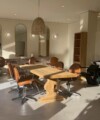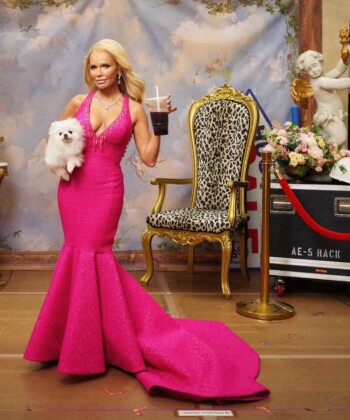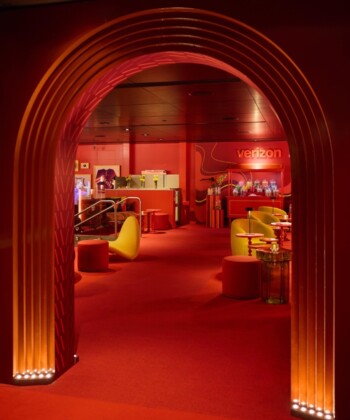When paper sculptor Zai Divecha isn’t in her studio in San Francisco’s Dogpatch neighborhood, she’s carefully analyzing and deconstructing bathroom tiles, intricate metal screens, peeling tree bark, and the shapes and shadows in clouds. “I love anything with patterns, and I snap photos of patterns everywhere,” says Divecha, whose father is from Mumbai, India and her mother boasts Scandinavian roots. “I love the fog and the glimpse of white ombré when a hill ascends into a fogbank.”
But for Divecha (whose name means “jasmine flower” in Marathi, the language spoken in the Indian state of Maharashtra), now obsessed with pleating, folding, and layering crisp, clean white paper for art installations, her journey to becoming a full-time paper artist was completely accidental. “My earliest memories were of drawing, knitting, decoupage,” says Divecha, who grew up in Berkeley. “You name it, I tried it.” After stints working in marketing for a tech firm, interning for several nonprofits in public health (she holds a master’s degree in public health from Yale’s School of Public Health), and, most recently, laboring as a metal artist, she was ready for a change. More specifically, she wanted a profession that came with the following elements: peace and quiet and the luxury of being in a flow state.
https://www.instagram.com/p/B3DCYN8nhtu/
A fateful trip to visit her grandmother at the hospital changed everything. “My mom told me to bring something to do,” Divecha recalls. “So I brought some paper, a ruler, an X-Acto knife, and a book [on how to make pop-up cards], and thought, ‘This will be a good way to experiment,’ and, well, turns out I got totally hooked. It felt like my guilty little secret and like cheating on metal, but switching from metal to paper felt totally easy. I was drawn to how quiet paper is, both the medium and the process of working with it.”
Ultimately, through Instagram, friends, and friends of friends, Divecha’s business flourished, and she’s now represented at Marrow Gallery in the Inner Sunset district. She’s also designed a 20-foot-long installation for a local bagel shop, Daily Driver, and created pieces for the headquarters of Square and Twitter, and is now hard at work on a hospitality commission in the North Bay with an art consultant.
“I love that it’s such an everyday material and old analog material,” Divecha says of paper. She admits she still pens handwritten, hard-copy thank you notes. “From signing receipts and signing envelopes, it’s an ephemeral material and this moment of magic when you look at it. It’s that moment of, ‘Oh my gosh,’ and taking something so mundane and turning it into something precious and beautiful. I love the freedom.”
These days, Divecha is pinching herself over her newfound career. “I could see myself experimenting with slightly different materials [like ceramics or concrete], but I no longer feel that need to change industries and see what’s next,” Divecha says. “I feel like I have so much left to explore with paper.”
For more on San Francisco, click here.






































